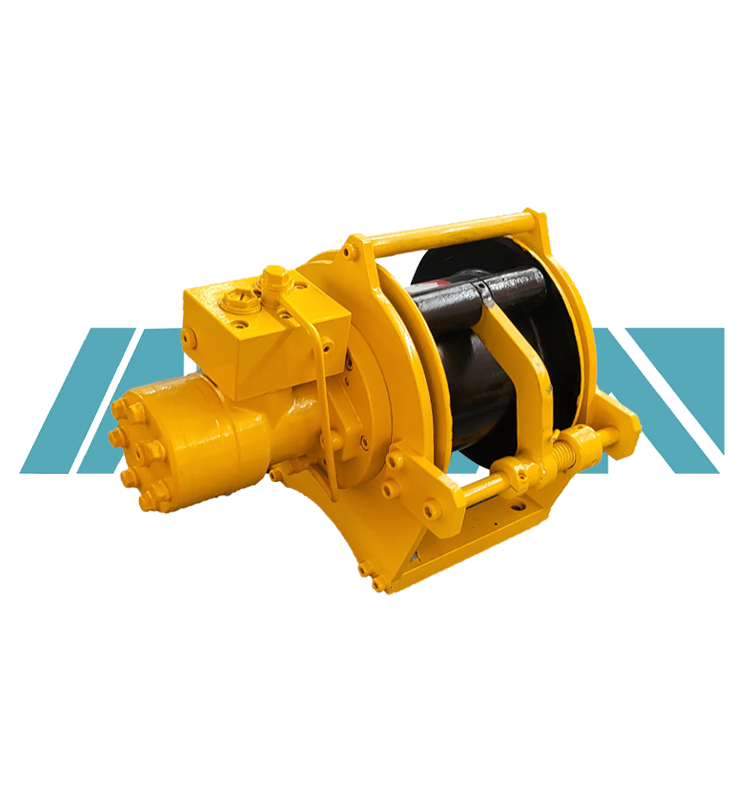 中文版
中文版



Welcome to contact us by phone:0086-0312-7969888
Using a truck hydraulic winch involves several steps to ensure safe and effective operation. Below are general instructions for using a truck hydraulic winch. It's essential to follow the specific guidelines provided by the manufacturer of your particular winch, as features and procedures may vary:
1. Familiarize Yourself with the Winch:
Read the user manual provided by the winch manufacturer. Understand the winch's features, controls, and specifications. Take note of the winch's rated capacity, recommended operating pressures, and any safety guidelines.
2. Inspect the Winch and Equipment:
Before use, visually inspect the winch, hydraulic hoses, and other components for any signs of damage, wear, or leaks. Ensure that all connections are secure and that the winch is mounted properly on the truck.
3. Check Hydraulic Fluid Level:
Verify that the hydraulic fluid level in the truck's hydraulic reservoir is at the recommended level. Top up the fluid if necessary, using the type of hydraulic fluid specified by the manufacturer.
4. Connect Hydraulic Hoses:
Connect the hydraulic hoses from the truck's hydraulic system to the winch. Follow the color-coded markings if present, ensuring that the connections are secure and leak-free.
5. Power On the Hydraulic System:
Start the truck's engine and engage the hydraulic system. Depending on the truck's configuration, this may involve turning a switch, activating a PTO (Power Take-Off) system, or using another designated method.
6. Engage the Winch:
Depending on the winch model, engage the clutch or control mechanism to allow the winch to operate. This may involve disengaging a free spool mode if applicable.
7. Attach the Load:
Securely attach the load (the object you are pulling or lifting) to the winch using an appropriate attachment point, such as a snatch block or clevis hook. Ensure that the load is within the winch's rated capacity.
8. Operate the Winch:
Use the winch controls to operate the winch. Common controls include a joystick, buttons, or levers that allow you to control the direction and speed of the winch. Pay close attention to the load and adjust the controls accordingly.
9. Monitor Tension and Alignment:
Keep an eye on the tension in the winch cable or rope and ensure that it spools onto the drum evenly. Maintain proper alignment to prevent the cable from stacking or binding.
10. Use Snatch Blocks if Needed:
- If necessary, use snatch blocks to change the direction of the pull or increase the pulling capacity. Follow the manufacturer's guidelines for the proper use of snatch blocks.
11. Stop the Winch Safely:
- When the operation is complete or if any issues arise, stop the winch by releasing the controls. Allow the winch to come to a complete stop before disengaging the clutch or shutting off the hydraulic system.
12. Secure the Load:
- Once the load is in the desired position, securely fasten it and disconnect the winch from the load. Ensure that all equipment is properly stowed.
13. Power Off the Hydraulic System:
- Turn off the truck's engine and disengage the hydraulic system. This may involve turning off the PTO or using another designated method.
14. Perform Post-Operation Inspection:
- Conduct a post-operation inspection of the winch, hydraulic hoses, and associated components. Address any issues, leaks, or damage before the next use.
Always refer to the specific instructions provided by the manufacturer for your truck hydraulic winch, as procedures may vary. Additionally, adhere to safety guidelines, use appropriate personal protective equipment, and consider the load's weight, size, and characteristics during winching operations.
X